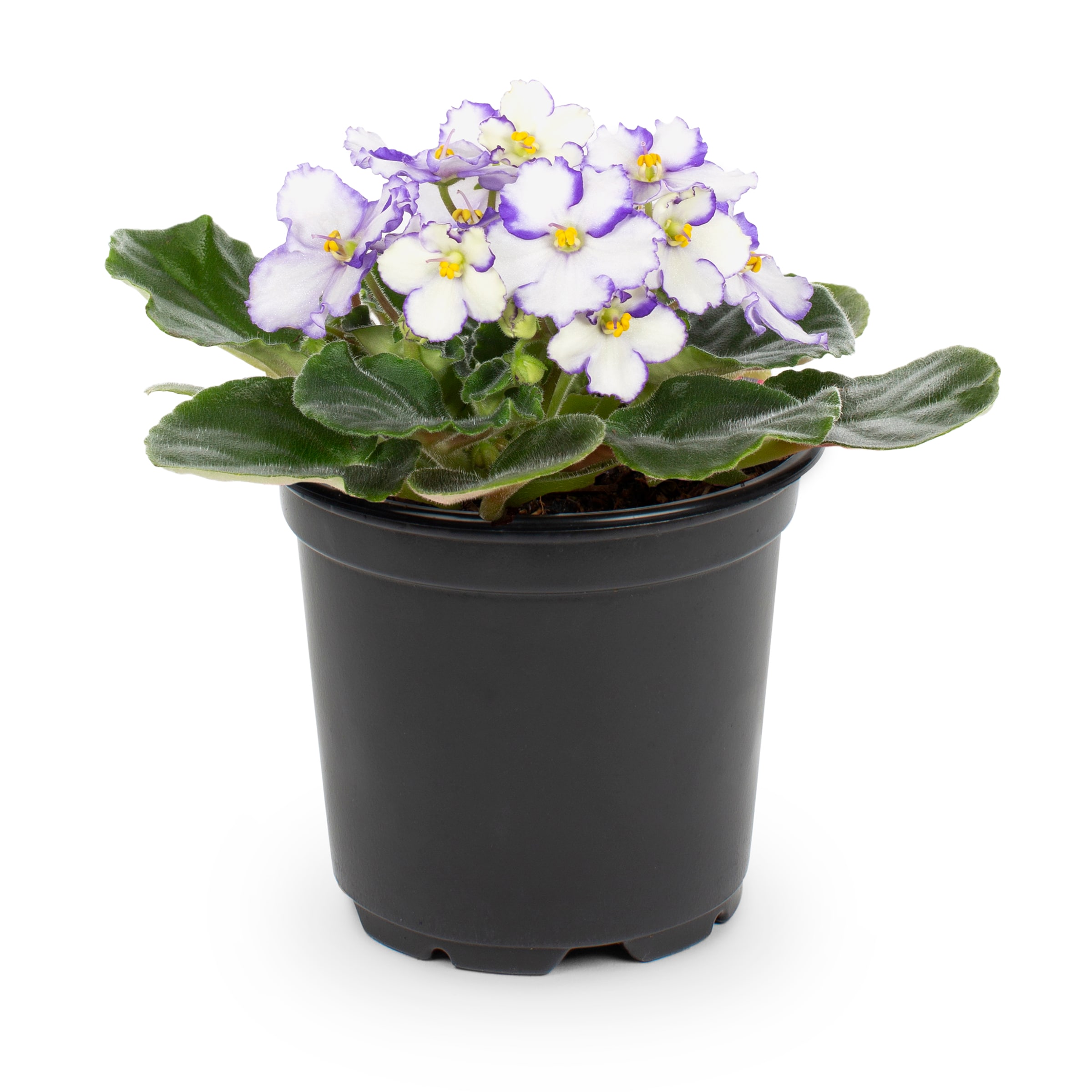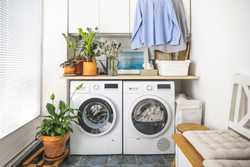Introducing a few plants to your office space can create a more relaxing environment, improve its air quality, and give it a much-needed makeover, but investing in the wrong flora will only result in dead plants, a mess to clean up, and a waste of money. The good news is there are many types of beautiful office plants that are far more resilient than you may expect, need minimal care, and are wholly equipped for the brightness level of your unique workplace.
It’s worth taking the time to understand what qualities make a plant a prime pick to spruce up your office and how to avoid ones that won’t last a week. I’ve thoroughly researched a botanical garden’s worth of palms, ivies, cacti, and more to highlight the best office plants money can buy.
Our top picks for the best office plants
![[object Object] [object Object]](https://mobileimages.lowes.com/productimages/fc28eb5c-cab4-4c28-8987-1b0a4342339d/08315801.jpg)
Golden Pothos Plant or Devil’s Ivy
A Korean research team recently conducted a study on 18 different indoor plant species to determine which may be the best at absorbing particulate matter floating in the air, and Epipremnum aureum, aka the “pothos plant,” was the sixth-most effective at absorbing fine airborne particulate from the space around it. It’s easy to appreciate pothos plants for their air purifying ability alone, but these long fast-growing plants are also top picks for an office because of how well they do in low-light conditions, that they only need to be watered once every week or two, and for their leggy tropical vines with vivid green heart-shaped leaves.
Specifications
- Size: Up to 8 feet long
- Fertilize: General houseplant fertilizer every 4 to 6 weeks during spring and summer
- Water: Minimal, only water when soil feels dry
- Light: Bright or indirect light is best, but does well in low or artificial light
- Sun exposure: Minimal
- Price on publish: $20.79 - $34.99
Pros:
- Extremely durable
- Up to 8 feet of bright green vines
- Thrives when placed on the surface of an aquarium
The bottom line:
Pothos are well-known for removing particulate matter from the air around them, and since they require minimal care, these plants are a top-pick for freshening up a stuffy office.
![[object Object] [object Object]](https://mobileimages.lowes.com/productimages/a360a431-c980-4c51-b9be-a336ba0bbd65/09849160.jpg?size=mthb)
Cacti and Succulents
With countless shapes, textures, and colors to choose from and practically zero maintenance, a tiny potted cactus or succulent is the perfect plant for your home office. These tough plants require minimal water throughout the year and even less during the cooler winter months, are extremely slow-growing, rarely need pruning, and tend to be on the more affordable side, making them easy to place on the windowsill, shelf, or desktop of anyone’s home office.
Specifications
- Size: Highly variable
- Fertilize: Special cactus and succulent fertilizer (either as granules or liquid) once a year
- Water: When soil is completely dry
- Light: Maximum
- Sun exposure: Variable but note that some plants require six or more hours of south- or west-facing sun
- Price on publish: $18.99 - $28.98
Pros:
- Huge variety of shapes, textures, and colors
- Very easy to care for
- May never need to be repotted
Cons:
- Best reserved for extra-sunny spaces
The bottom line:
Affordable, exceptionally durable, and available in an array of brilliant designs, cacti and succulents are a great fit for anyone’s sunny home office.
Best plant for an office with no windows: Spider Plant
![[object Object] [object Object]](https://mobileimages.lowes.com/productimages/12c6a753-24d4-480b-a711-ff2ffb34cfb1/46432173.jpg?size=mthb)
Spider Plant
Since leggy spider plants are best when suspended from the ceiling, they won’t miss windows when they can appreciate hanging out under your office’s artificial lighting all day. Spider plants do well with indirect sunlight, and while they may not grow nearly as quickly, a few hours a day under bright office lighting is a sufficient alternate option. In addition, spider plants only need water once a week or so, are famous for soaking up common airborne toxins, and are a fan-favorite for novice plant owners for their long flowing leaves and overall durability.
Specifications
- Size: Up to 24 inches tall
- Fertilize: General houseplant fertilizer every 2 to 4 weeks during the growing season
- Water: Once a week
- Light: Bright is best, but thrives in low light areas too
- Sun exposure: Indirect
- Price on publish: $21.95 - $55
Pros:
- Attractive long flowing leaves
- Improves air quality
- Minimal care needed
Cons:
- The flowing plant can take up a lot of desk space if you opt not to hang it
The bottom line:
While these hanging plants love sunlight, a bright artificial light is a suitable replacement for these lanky tropical plants.
Best office plant for no sunlight: Bromeliad
![[object Object] [object Object]](https://mobileimages.lowes.com/productimages/e2b7f07a-b2e5-4674-b4e7-d4810bbbaae2/64814280.jpg?size=mthb)
Bromeliad
If your office relies on artificial light but you still have your heart set on turning your workplace into a tropical paradise, there are many colorful bromeliad species that can flourish without seeing a ray of sunlight. The extensive bromeliad family features a range of plants that are capable of living under artificial light, including the Cryptanthus, or Earth Star who prefers moderate indirect lighting throughout the day, to the bright red blushing bromeliad that thrives on bright artificial light. Many bromeliads are well-suited for life under artificial lighting, but it’s up to you to research which of these vividly colored, humidity-loving plants is the best fit for your office space.
Specifications
- Size: 18 inches tall
- Fertilize: General houseplant fertilizer once a month during the growing season
- Water: Every 7 to 10 days during the growing season; every 2 to 3 weeks during the winter
- Light: Soft-leaved bromeliads prefer low light; stiff-leaved ones prefer bright indirect light
- Sun exposure: Some varieties can be kept without sun
- Price on publish: $21.04 - $25.42
Pros:
- Beautiful, colorful tall flower
- Minimal light needed
- Takes several years before it needs to be repotted
Cons:
- Best reserved for humid spaces
The bottom line:
As long as your office has the artificial lighting to match its needs, a colorful tropical bromeliad is a top pick for sun-free spaces.
Best office plant for low light: Snake Plant
![[object Object] [object Object]](https://mobileimages.lowes.com/productimages/ecdf7f31-3616-46fc-b694-d403274087bc/49044470.jpg)
Snake Plant
When it comes to office plants, its green bands, distinctive tall vertical leaves, and bold yellow outlines makes snake plants one of the most attractive low-light options available. Natural beauty aside, snake plants do surprisingly well in relatively shady conditions with indirect sunlight, and they only need to be watered every two weeks or so.
Specifications
- Size: 48 inches tall
- Fertilize: Once a month during the growing season, but less frequently if low light conditions
- Water: When soil is extremely dry; every 2 weeks to once a month
- Light: Bright indirect sunlight to low artificial light
- Sun exposure: Indirect only
- Price on publish: $24.37 - $44.99
Pros:
- Thrives in low light conditions
- Minimal care and water needed
- Extra-tall foliage
The bottom line:
Since shade-loving snake plants require little attention, they are a fine addition to any office that receives a few hours of indirect sunlight each day.
![[object Object] [object Object]](https://mobileimages.lowes.com/productimages/562cd524-635c-48d1-8eb9-ecf4b95a065f/44856511.jpg)
Tillandsia (Air Plants)
If your office space doesn’t have access to natural sunlight, but you want to keep a few hardy and unconventional plants in your area, a bright artificial light is more than enough to keep a tillandsia happy and healthy. As long as your tillandsia (also known as an air plant) receives a few hours of bright to moderate light a day, the little soil-free plant will thrive on a shelf, terrarium, or on your desktop. In addition to flourishing under artificial light, simply placing your air plant in a bowl of water for up to 20 minutes and letting it dry on a paper towel before putting it back on display is all the maintenance a tillandsia needs for an entire week.
Specifications
- Size: 4 inches
- Fertilize: Use fertilizer specifically for epiphytes once a month
- Water: Soak in a bowl of water for 30 to 60 minutes once a week
- Light: Bright indirect or artificial light for 6 to 8 hours a day
- Sun exposure: No/keep at least 3 feet away from windows
- Price on publish: $14.95 - $16.13
Pros:
- Extremely durable
- Easy to place almost anywhere
- Affordable
The bottom line:
Whether you hang them from the ceiling or display them on your desk, air plants are a thrifty and tough office plant that does well under bright artificial lighting.
Best plant for an office desk: Lucky Bamboo
Slim, trim, and extremely easy to care for, a cluster of lucky bamboo is hands-down the best desktop plant for displaying on your office desk. These incredibly rugged stalks are at their best when placed in a vase of drinking water with pebbles to hold it in place. As long as you change the water once a week and your desk receives plenty of bright indirect sunlight, your bamboo will serve as a vibrant, green desktop companion for a long time to come.
Some office gardeners style their lucky bamboo by covering a portion of their plant, so the fast-growing bamboo curls or bends toward the brightest source of light available. By using this method and rotating its container so the bamboo’s bend continuously reaches towards the sun, you can create some fun shapes with your desk-bound décor.
Specifications
- Size: Between 1 and 5 feet tall
- Fertilize: Specialty liquid lucky bamboo fertilizer drops every 3 months
- Water: Best when grown in water, but moist soil works too
- Light: Bright to low light
- Sun exposure: Indirect sunlight
- Price on publish: $7.98 - $24.99
Pros:
- Fast growing
- Easy to care for
- Stems can be “trained” to curl, braid, or grow straight
The bottom line:
Affordable, durable, and easily curled into exciting designs, you couldn’t ask for a better desktop office plant than lucky bamboo.
Get it here: Lucky Bamboo
![[object Object] [object Object]](https://mobileimages.lowes.com/productimages/145d9351-4129-4024-a35d-3649d0aac8f6/05114003.jpg)
Silk Bougainvillea
Since bougainvillea plants require plenty of skill and effort to care for, especially when cultivated as an indoor species, this silk edition is the ultimate substitute for anyone who wants to appreciate the neon pink flowers of this South American species without all of the hard work associated with the real thing. Standing at just about two to three feet tall and covered with realistic rosy blooms, this artificial plant requires no light, water, or care of any sort aside from being dusted occasionally.
Specifications
- Size: Varies
- Fertilize: N/A
- Water: N/A
- Light: N/A
- Sun exposure: N/A
- Price on publish: $34.99 - $57.95
Pros:
- All of the vibrant pink color of a blooming bougainvillea plant, without the work
- Lifelike design
- Durable construction
Cons:
- More vase color options would be appreciated
The bottom line:
Since keeping a live bougainvillea plant inside an office would be a challenging task, do yourself a favor by getting the next best thing with this convincing bright pink replica.
Best large office plant: Majesty Palm
![[object Object] [object Object]](https://mobileimages.lowes.com/productimages/cccbb2c6-3440-466a-9f7e-076cb430da1d/66883820.jpeg?size=mthb)
Majesty Palm
If you’re looking for an attention-grabbing plant that will effortlessly fill in plenty of floor space, you can’t go wrong with keeping a gorgeous tropical majesty palm in your office. Although these low-maintenance palm plants reach gigantic heights of almost 100 feet in the wild, they are normally around 4 to 8 feet tall when sold and grow another foot per year on average. Keeping the roots in an indoor-appropriate pot will keep it from growing much more than 10 feet tall. While it rarely needs to be watered more than once a week, these tall palms prefer warm and humid environments and benefit from being misted with water in cooler and drier climates.
Specifications
- Size: 10 to 12 feet (fully mature)
- Fertilize: Once a month during the growing season
- Water: About once a week
- Light: Bright to moderate, 6 to 8 hours a day
- Sun exposure: Partial shade
- Price on publish: $40.47 - $59.98
Pros:
- Tall, wide, and beautiful tropical palm
- May grow another foot or so in a year
- Perfect for bright office spaces
Cons:
- Best reserved for more humid environments
The bottom line:
Majesty palms are perfectly suited for adding some color and a tropical vibe to your office space, and they’re the easiest extra-large office-friendly plants to care for too.
Best pet friendly office plant: African Violets
Best pet friendly office plant

Lowe's African Violet House Plant in 13-oz Pot | NURSERY
If you’re lucky enough to have an office pet curled up on your lap while you work, it can be challenging to find a nice-looking plant that is both office and pet-friendly, however the colorful, easy to maintain, and resilient African violet fits the bill perfectly. Not only are these pretty little plants completely non toxic if chewed or ingested, they only need to be watered once a week, are notably inexpensive, and their colorful purple, blue, and white flowers bloom year-round.
If hardy desktop flowers aren’t your thing, and you’d prefer a cat or dog-proof alternative option, spider plants are just as pet friendly!
Specifications:
- Size: 8 inches tall
- Fertilize: Water-soluble urea-free fertilizer every 4 to 6 weeks in spring and summer
- Water: About once a week when the top inch of soil feels dry
- Light: Bright
- Sun exposure: Indirect sunlight, 8 to 12 hours a day
- Price on publish: $5.98 - $15.20
What we like:
- Easy to care for
- Vibrant plum, pastel violet, bluish, and white tones
- Appreciate a wide, but comfortable range of temperatures
What we don't Like:
- Their fuzzy dust-collecting leaves will need to be lightly dusted occasionally
The bottom line:
Cute, a snap to care for, and won’t upset your pet’s tummy if they treat themselves to a bite, African violets are the ultimate pet-friendly office plant.
Get it here: African Violets
What to consider when buying office plants
Lighting needs
Since all plants need light to survive, it’s vital to select plant species that require at least as much brightness that your office can provide. For example, a sunny office with plenty of windows is an excellent place for cacti, pothos plants, and majesty palms, while snake plants and lucky bamboo are perfect for low-light areas.
Size
Whether you’re considering a compact desktop plant or an extra-tall palm to fill out some floor space, you should research how large a plant may reach at full maturity before you buy. While many of the plants on my list will arrive small and not grow much larger, others are fast-growing varieties that may need regular pruning.
Note that most plants kept indoors do not reach the sizes of their outdoor counterparts.
Maintenance
Between weekends, holiday vacations, and sick days, it’s worth seeking out plants capable of surviving with minimal maintenance. Plants that require water just once a week or longer are excellent options for busy lives and hybrid work schedules.
Office space
Just because a plant appears on this list does not mean it’s the right fit for your specific office. Some plants need a humid and warm environment, others require a lot of sunlight, and there are certain species that are best-suited to be suspended from hanging baskets, placed on shelves, or set on the floor. Be sure to plan around the office space you have to comfortably fit the plants on your wish list before buying.
Aesthetics
There may be a limited number of indoor plants on this list, but there are many subspecies in each category with different shapes, colors, and patterns that may match your one-of-a-kind style. If one or more of these office-friendly plants sounds like a good fit, take your time to research its family of plants online. You may be surprised at the range of beautiful options you’ll find!
How to water and maintain office plants
I highly recommend taking the time to research online care guides before buying any plant for your office to ensure that it is a low-maintenance option, rugged, and is capable of easily living under the lighting conditions of your workspace. Once you’ve found the perfect foliage for the office, here are some general tips to keep your new plants properly watered and cared for.
Outside of a regular watering schedule based on the needs of your plant (weekly, biweekly, etc,) signs that an office plant needs some water include wilted and browned leaves, and dry soil. On the other hand, if the top level of soil feels wet to the touch, the plant does not need to be watered. Signs of an overwatered plant include yellowed leaves as well as mushy stems, roots, and other parts.
Pour room-temperature water over the base of the plant until water begins to seep out of its drainage hole.
Make sure that your plant containers are able to drain away excess water. Keep in mind that plants left in standing water are likely to become moldy, develop root rot, and die. Remove leftover water after a few minutes to prevent the effects of overwatering.
Pay attention to your office plants. Expect your watering routine to be a little flexible as the weather and seasons change, as plants may need more water in the warmer months, and less when it’s cool. Some species appreciate a light spritzing of water to stay moist between waterings, while cacti prefer to go without water for much longer than the average plant. And don’t forget to clean large, waxy leaves with a soft, damp cloth periodically from dust accumulation.
Note that all plant species prefer different moisture levels, and they should be watered accordingly.
Air purifying and health benefits
It’s common knowledge that plants pull in carbon dioxide via photosynthesis and release fresh oxygen, but pothos plants, snake plants, and spider plants are notable for their ability to purify the air, making them healthier options for enclosed indoor spaces like offices.
In addition to their air purifying properties, many of the plants on my list provide critical health benefits when placed throughout the office such as fewer airborne bacteria, mold, and fungal particles in the air, and a calmer aesthetic throughout the office that naturally lessens fatigue and stress, while boosting productivity.
Spots to avoid placing plants in an office
Restrooms
Between the lack of windows and dim artificial lighting, restrooms are easily the worst place for an office plant. Artificial plants are a colorful, durable, and affordable substitute for decorating an office restroom.
Direct sunlight
Many indoor plants will yellow, wither, and burn if placed in direct sunlight for hours on end, even behind a tinted window. While a bright and sunny office space is perfect for cacti and succulents, most office-friendly plants prefer indirect sunlight or plenty of bright artificial light.
Complete darkness
No matter how “low-light” a species may be, plants will quickly wither and die if kept in absolute darkness because they utilize photosynthesis to produce the energy needed to survive. The good news is that there are plenty of office plants that thrive in low-light conditions or have the capacity to survive exclusively under artificial light.
Motion-activated lighting
Although some plants do well under artificial lighting, office lights that activate via motion sensors can become a death sentence because of an extra long holiday break. This is easily solved by setting up an automatic timer so that your office plants will receive the light they need whether you go to the office or take a much-needed sick day.
How I selected the best office plants
Between my comprehensive research and previous experience with tending to plants in my own home office over the years, I hand-selected the plants that are best-suited for the average office space. Some of the factors I considered while crafting my list of workspace flora include how easy they are to maintain, aesthetics, hardiness, longevity, and price.
Frequently asked questions (FAQs)
Which plant should be kept in the office?
Before you transform your workplace into a jungle, there are some important qualities that make a plant a good fit for life in an office. For example, the best office plants flourish in low-light conditions, require minimal maintenance for surviving holiday weekends alone, help to purify the air around them as snake, pothos, and spider plants do, and will easily endure your office’s average temperature range.
Are office plants safe for pets?
Sometimes. Although it’s tempting to put an especially attractive plant in your cart while shopping the garden department, taking a few minutes to learn if it may be toxic for cats and dogs if ingested is critical if you share your office with a pet.
While some common office plants like African violets, air plants, and majesty palms are non-toxic and pet-safe options, others such as snake plants, lucky bamboo, and some varieties of pothos plants are poisonous if consumed. No matter how pretty an office plant may be, it is absolutely not worth an office pet’s discomfort and a pricey vet bill.
Are succulents good for offices?
Mostly! While cacti are known for appreciating especially sunny spaces, there are plenty of succulent species who will do well under artificial light too. They require very little care, infrequent watering, and many succulents are small and compact enough to place in any office space, such as the white-banded and flower shaped haworthia, tall and red-stemmed elephant brush, and the wide and pebble-like lithops.
As long as you select an appropriately sized species that is well-suited for the brightness of your area, a succulent is an excellent low maintenance plant for the average office space.
Can plants grow in offices that only have artificial light?
Absolutely! Artificial LED or fluorescent office lighting is more than suitable for a wide variety of plants that flourish in low-light conditions, such as pothos plants, snake plants, and spider plants.
Note that all plant species have different needs, so please do your research to find out how much light a shade-loving plant needs before investing in your office garden.


![[object Object] [object Object]](https://mobileimages.lowes.com/productimages/fc28eb5c-cab4-4c28-8987-1b0a4342339d/08315801.jpg)
![[object Object] [object Object]](https://mobileimages.lowes.com/productimages/a360a431-c980-4c51-b9be-a336ba0bbd65/09849160.jpg?size=mthb)
![[object Object] [object Object]](https://mobileimages.lowes.com/productimages/12c6a753-24d4-480b-a711-ff2ffb34cfb1/46432173.jpg?size=mthb)
![[object Object] [object Object]](https://mobileimages.lowes.com/productimages/e2b7f07a-b2e5-4674-b4e7-d4810bbbaae2/64814280.jpg?size=mthb)
![[object Object] [object Object]](https://mobileimages.lowes.com/productimages/ecdf7f31-3616-46fc-b694-d403274087bc/49044470.jpg)
![[object Object] [object Object]](https://mobileimages.lowes.com/productimages/562cd524-635c-48d1-8eb9-ecf4b95a065f/44856511.jpg)
![[object Object] [object Object]](https://mobileimages.lowes.com/productimages/145d9351-4129-4024-a35d-3649d0aac8f6/05114003.jpg)
![[object Object] [object Object]](https://mobileimages.lowes.com/productimages/cccbb2c6-3440-466a-9f7e-076cb430da1d/66883820.jpeg?size=mthb)




